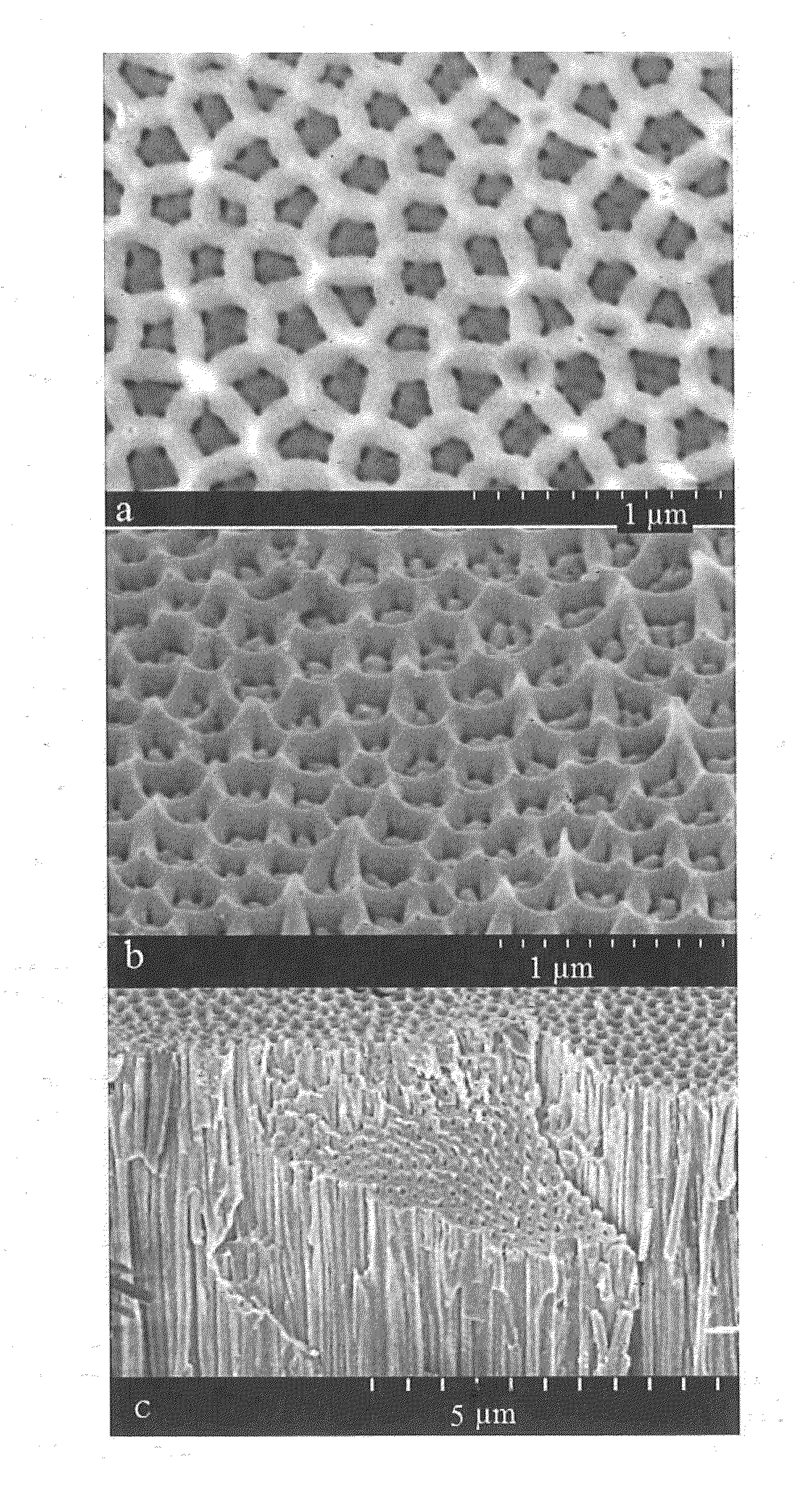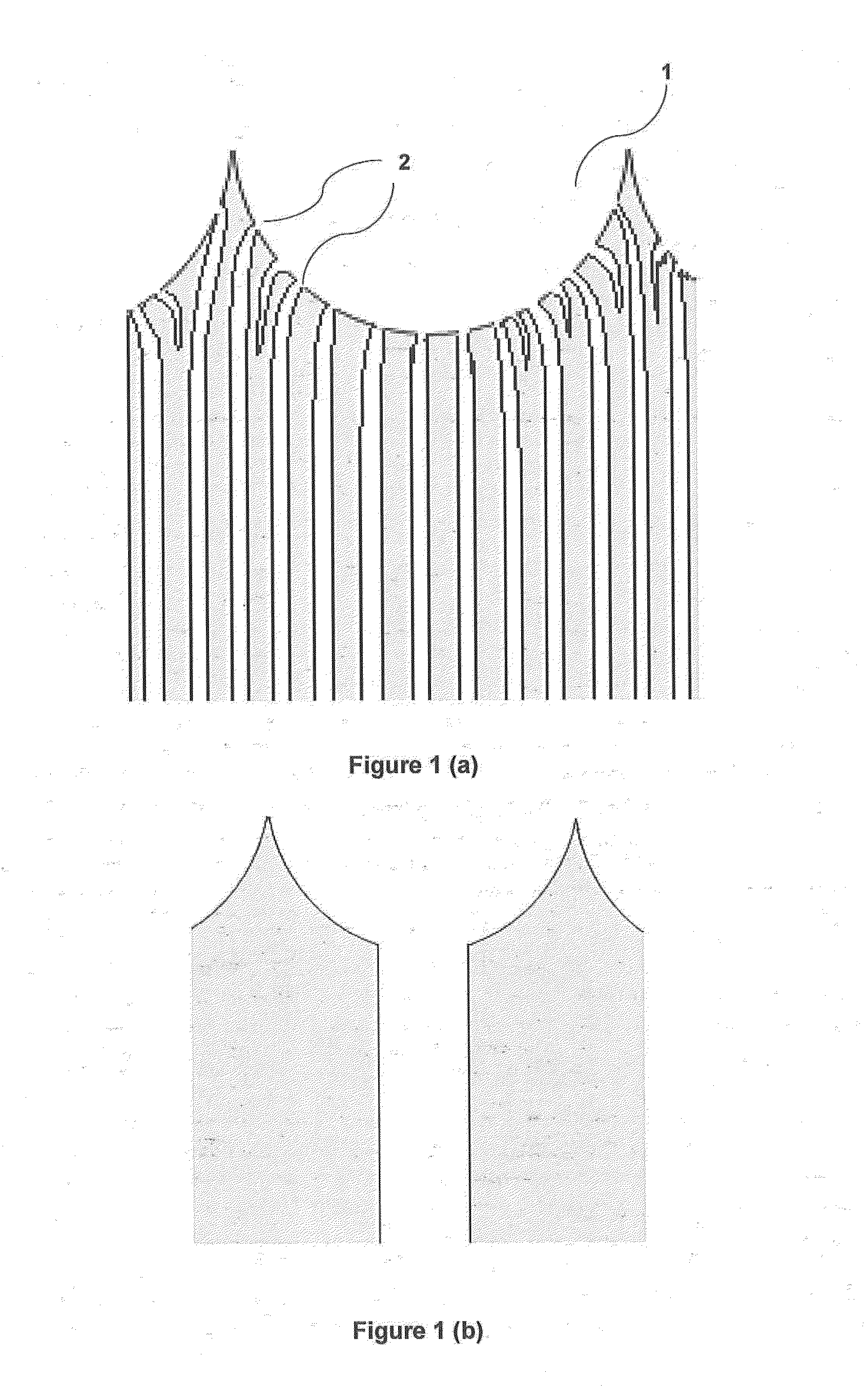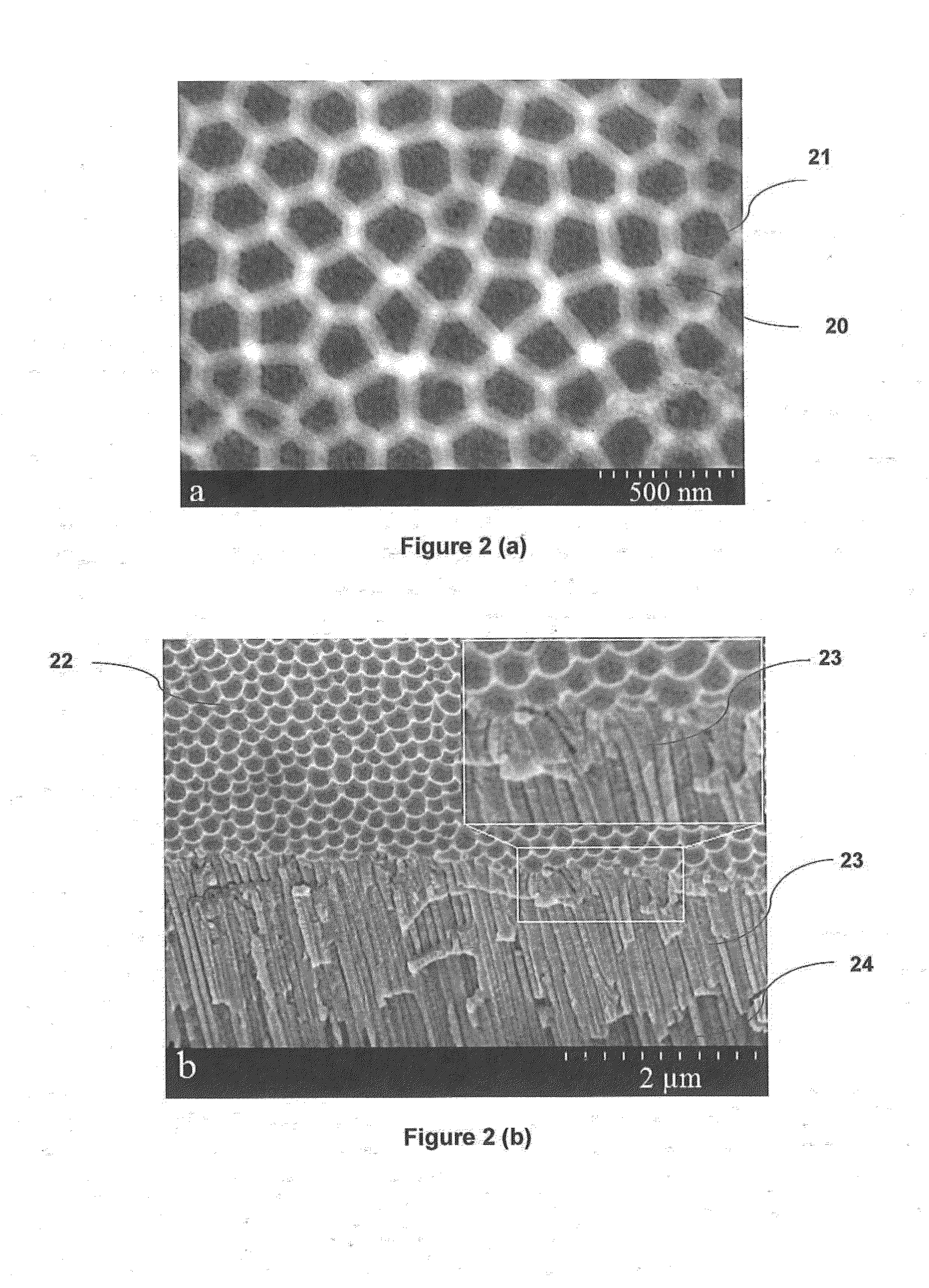Multilayer anodized aluminium oxide nano-porous membrane and method of manufacture thereof
an anodized aluminium oxide and nanoporous membrane technology, applied in the direction of filtration separation, electrolysis process, stationary filtering element filtering, etc., can solve the problems of blood component leakage, membrane that cannot withstand pressure gradient, and only two layers, etc., to improve hemofiltration and hemodialysis process
- Summary
- Abstract
- Description
- Claims
- Application Information
AI Technical Summary
Benefits of technology
Problems solved by technology
Method used
Image
Examples
example 1
[0104]The nano-porous mutli-layer membrane is prepared In accordance with the said second embodiment hard anodization is carried out in both the steps. Electro-polishing and barrier layer removal processes were carried out as described above. The two steps of hard anodization comprised steps of:[0105]the said first step anodization is performed at a voltage selected in the range of 120 to 130V in oxalic acid as electrolyte for 5 to 10 min wherein etching is carried out in chromic acid and phosphoric acid wherein the temperature is in the range of 65-80° C. wherein preferably 6 wt % phosphoric acid and chromic acid is 2 wt %. wherein purity of Chromic acid is 99% and purity of phosphoric acid is 85%;[0106]upon etching hexagonal arrangement of concave surfaces appeared on Al surface wherein the depth of this layer is about 100 nm;[0107]plurality of small pores initiated in each of the concave surface;[0108]the said second step hard anodization is performed at 100 to 110 V using same e...
example 2
[0111]In accordance with the third embodiment the two step anodization was also carried with different electrolytes. The first step anodization was done at 126V in oxalic acid and second step in sulfuric acid at 20V. Three layered membrane was formed with first layer concave surface diameter 300 nm, second layer pore diameter about 5 nm and third layer pores diameter about 15 nm as shown in FIG. 4. Surface image depicting first and second layer is seen in FIG. 4(a). Further cross-sectional image depicting all the three layers is seen in FIG. 4(b)
example 3
[0112]In accordance with the fourth embodiment, mild anodization is used in both the steps, however the electrolytes used are different in both the steps. The first step mild anodization is performed at 40 V in oxalic acid and second step at 20 V in sulfuric acid. Three layered membrane is formed with first layer concave surface diameter 100 nm, second layer pore diameter about 5 nm and third layer pores diameter about 15 nm as depicted in FIG. 5.
PUM
| Property | Measurement | Unit |
|---|---|---|
| temperature | aaaaa | aaaaa |
| temperature | aaaaa | aaaaa |
| voltage | aaaaa | aaaaa |
Abstract
Description
Claims
Application Information
 Login to View More
Login to View More - R&D
- Intellectual Property
- Life Sciences
- Materials
- Tech Scout
- Unparalleled Data Quality
- Higher Quality Content
- 60% Fewer Hallucinations
Browse by: Latest US Patents, China's latest patents, Technical Efficacy Thesaurus, Application Domain, Technology Topic, Popular Technical Reports.
© 2025 PatSnap. All rights reserved.Legal|Privacy policy|Modern Slavery Act Transparency Statement|Sitemap|About US| Contact US: help@patsnap.com



